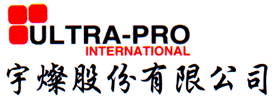Winbond intros new serial flash for space-critical applications
With minimal package dimensions as small as 3.4-square millimeters, the new Winbond serial flash devices meet the space-saving needs of the rapidly growing mobile-computing market with a range of densities from 512Kb to 16Mb. Available in eight-pin ultra-thin small-outline no-lead (USON) and wafer-level-ball-grid-array (WLBGA) forms, the memories occupy less than 20% of the space used by ordinary 30-square-millimeter WSON and SOIC packages, the company said.
The new USON 6-square-millimeter SpiFlash memories come in densities of 512Kb, 1Mb, 2Mb, 4Mb and 8Mb in 2.5V or 3V versions, with power-saving 1.8V versions also available for 2Mb and 4Mb densities, according to Winbond. The devices are sampling now with some versions in full production, and priced from US$0.32 to US$0.57 in 10,000-unit quantities.
The WLBGA devices, which use a wafer-level-chip-scale-packages (WLCSP) assembly process, are available in 8Mb (3.4-square millimeters) and 16Mb (4.8-square millimeters) densities that operate at 1.8V. The WLBGAs are 0.47mm in height and use 11% and 16% the space, respectively, of a WSON or SOIC package, making them the smallest and thinnest packages on the market today, Winbond indicated. The WLBGA packages also provide design security by preventing access to the chips' signals once mounted to PCBs, the company added.
Both 8Mb and 16Mb WLBGA devices are in production now and priced from US$0.68 to US$0.97 in 10,000-unit quantities, Winbond said.
In related news, Winbond noted that it shipped more than one billion serial flash memories in the first three quarters of 2011. The company's 90nm flash production technology has been key in driving flash memory growth to 40% of its revenues, it said. Winbond is migrating to 58nm technology for flash products to further reduce costs and boost output.

